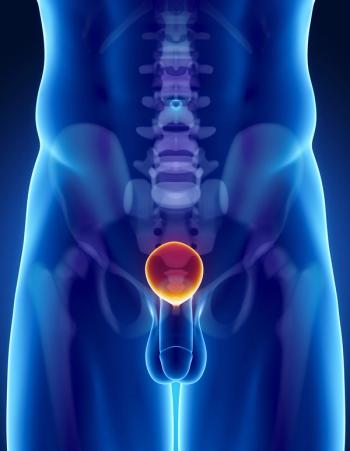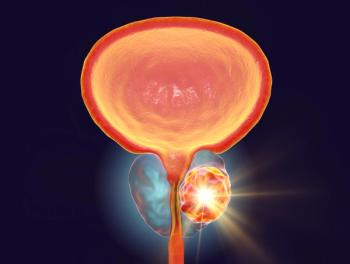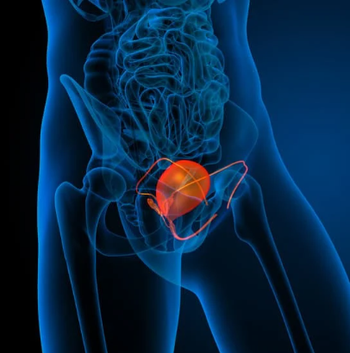
- ONCOLOGY Vol 15 No 8
- Volume 15
- Issue 8
Combined-Modality Staging for Localized Adenocarcinoma of the Prostate
The goal of identifying a set of pretreatment risk-stratifying factors for patients with localized prostate cancer is to be able to individualize treatment and optimize patient selection for clinical trials. Low-risk patients are most likely
Dr. D’Amico has written an outstandingoverview of risk stratification in localized prostate cancer using a combinationof prognostic factors such as prostate-specific antigen (PSA) value, Gleasonscore, and clinical or pathologic stage to group patients as to their likelihoodof having occult locally advanced or developing advanced disease. Usingnomograms, equations, or tables, the clinician can "plug in" thepatient’s individual factors to determine his risk group. At the time ofinitial diagnosis or after initial primary treatment, the risk stratificationcan help the clinician make decisions about additional local or systemic therapyor better tailoring of the patient’s follow-up care.
Because clinically localized prostate cancer may be trulylocalized or, in actuality, more advanced, these risk stratifications arecritically important. Dr. D’Amico and other recent investigators such asPartin, Kattan, and Bauer (who is from my group) have taught us to think aboutcombining prognostic factors to better "stage" the patient, ratherthan relying only on traditional staging factors such as tumor size andradiographic imaging. Furthermore, a by-product of risk stratification isbroadened thinking about treatmentie, an awareness that surgery alone orradiation alone may not be sufficient for many higher risk men and that acombination of treatments may be indicated.
Choosing the "Best" Nomogram or Equation
Having said these positive things about risk stratification, itis also important to point out the major current problem: What is the bestnomogram or equation to use? There are now at least 42 published prostate cancernomograms according to a recent article by Ross, Scardino, and Kattan.[1] It isdifficult enough for a busy clinician to make the philosophical leap ofincorporating nomograms into practice. Ross et al correctly point out that thefield is currently hampered by a lack of comparisons of predictive accuracy. Inother words, how do we know that the groupings proposed by Dr. D’Amico, or forthat matter, any investigator, are "better" or more clinically usefulor applicable than a risk-stratification nomogram touted by someone else.
In the article by Ross et al,[1] our own work in this area wascriticized. Specifically, in 1998, Bauer et al from my institution developed aprognostic equation that used pretreatment PSA value, surgical Gleason sum,pathologic stage, and patient ethnicity to stratify risk of recurrence afterradical prostatectomy.[2] The equation was based on data from 378 patientstreated at Walter Reed Army Medical Center in the early PSA era and wasvalidated with an independent group of 91 patients from another militaryhospital. Ross et al correctly pointed out that the group at intermediate riskof recurrence was not significantly different from the low- or high-risk groupsin the validation.[2] Truthfully, I had overlooked this fact in 1998 when thearticle was published, and the peer reviewers of the article for the Journalof Urology overlooked it as well.
I mention this because our 1998 work was an honest yet rather"first-pass" effort to risk stratify our postsurgery patients. Despitethe small size of the study (N = 378) and suboptimal validation, it taught myclinician colleagues and me to think in terms of risk stratification.Furthermore, the equation was placed on our website at
The CPDR/CaPSURE Equation
Even before the article by Ross et al was published,[1] weembarked on further validation and updating of the equation developed by Baueret al.[2] Collaborating with the Cancer of the Prostate Strategic UrologicResearch Endeavor (CaPSURE) database[3] and increasing our Center for ProstateDisease Research (CPDR) cohort, we validated the Bauer equation with data from1,515 patients with a mean follow-up of 47 months (CPDR) or 36 months (CaPSURE).Table 1 shows the 3-, 5-, and 7-year disease-free survival rates for the low-,intermediate-, and high-risk groups. Differences among all of these rates arestatistically significant.
We then developed a modified multivariable Cox regression modelfor risk of recurrence (RR), based on this combined cohort of 1,515 patients:
RR = exp[(0.54 × race) + (0.05 × PSAst)
+ (0.23 × postop Gleason)
+ (0.69 × pathologic stage)]
In this equation, race = 1 if the patient is African-American,and 0 if white. PSAst is calculated using a sigmoidal transformationof highest pretreatment PSA. The postoperative Gleason sum enters the equationas a continuous integer value ranging from 2 to 10, with 10 being the highest orworst sum in the radical specimen. Pathologic stage = 1 if there wasextracapsular penetration and/or a positive margin (ie, pT3 disease) or 0 iforgan confined (pT2).
Table 2 lists eight risk groups, which are then consolidatedinto four risk groups (very low, low, high, and very high) with thecorresponding 3-, 5-, and 7-year disease-free survival rates after radicalprostatectomy. Figure 1 illustrates the disease-free survival curves for thesefour risk groups.
We believe this new equation will help improve patient care andhave made this new equation available on our website at
Conclusions
Although we believe our new model is an advance, we admit thatwe do not know if it is "better" or even as good as the risk groupingsproposed by Dr. D’Amico and others.[1] Our model needs to be compared in aprospective fashion with other nomograms that predict recurrence after radicalprostatectomy. Furthermore, additional prognostic factors, most notably thepercentage of cancer-containing biopsy cores as a surrogate of tumor volume(touted by D’Amico), will undoubtedly improve risk stratification in thefuture.
There is still much fine-tuning needed to help sort outintermediate-risk patients. For example, risk groups 3 to 7 have a 7-yeardisease-free survival ranging from 71.9% to 43.8% (Table2). Despite the factthat these groups represent 947 of our 1,515 patients (62.5%), the riskstratification is not ideal. It may represent the most prognostic poweravailable from our four factors (PSA, pathologic stage, Gleason score, andrace), but it is not enough for intermediate-risk assessment. In the future, wemust develop and validate nomograms that are simple and based on easily obtainedvariables, but they must also serve to better stratify the risk of patients inthe intermediate-risk group.
As Dr. D’Amico’s article shows, we have made great stridesin risk stratification as a new paradigm for clinically localized prostatecancer. However, much work remains to be accomplished.
References:
1. Ross RL, Scardino PT, Kattan MW: A catalog of prostate cancernomograms. J Urol 165:1562-1568, 2001.
2. Bauer JJ, Connelly RR, Sesterhenn IA, et al: Biostatisticalmodeling using traditional preoperative and pathological prognostic variables inthe selection of men at high-risk disease recurrence after radical prostatectomyfor prostate cancer. J Urol 159:929, 1998.
3. Lubeck DP, Litwin MS, Henning JM, et al: The CaPSUREdatabase: A methodology for clinical practice and research in prostate cancer.CaPSURE Research Panel. Cancer of the Prostate Strategic Urologic ResearchEndeavor. Urology 48(5):773-777, 1996.
4. Moul JW, Connelly RR, Lubeck DP, et al: Predicting risk ofPSA-recurrence after radical prostatectomy using Center for Prostate DiseaseResearch (CPDR) and CaPSURE databases. J Urol 166:October 2001 (in press).
Articles in this issue
over 24 years ago
Pain Control an Issue Againover 24 years ago
The Human Side of Cancer: Living With Hope, Coping With Uncertaintyover 24 years ago
Critical Report From the Institute of Medicineover 24 years ago
Study Finds Chemoradiation Helps Preserve Larynx in Cancer PatientsNewsletter
Stay up to date on recent advances in the multidisciplinary approach to cancer.


















































































